What is the Difference Between CBD and Kava?
Share this article
What is the Difference Between CBD and Kava?
In the world of natural wellness, CBD and kava are two popular plant-based substances often compared for their calming effects. While both are used for relaxation, they differ significantly in their chemical composition, effects, processing, consumption methods, and historical use. In this article, we break down the key differences between CBD and kava to help you make an informed choice.
1. Chemical Composition
-
CBD (Cannabidiol): A cannabinoid found in the Cannabis sativa plant, primarily derived from hemp. It interacts with the endocannabinoid system (ECS) but does not produce psychoactive effects like THC. When combined with other cannabinoids such as delta 9 THC, CBD can have an entourage effect, which enhances whatever affect CBD may have.
-
Kava (Piper methysticum): Derived from the root of the kava plant, it contains kavalactones, which impact neurotransmitters like GABA and dopamine, leading to relaxation and mild euphoria.
2. Biochemical Reaction
-
CBD: Works indirectly by modulating the ECS, influencing receptors like CB1 and CB2. It helps regulate pain, mood, inflammation, and anxiety without significant sedation.
-
Kava: Affects GABA receptors, similar to benzodiazepines, but without strong dependency risks. It also influences dopamine and serotonin levels, enhancing mood and relaxation.
3. Effects
-
CBD: Known for its anti-inflammatory, anxiolytic, and pain-relieving properties. Users report feeling relaxed, focused, and relieved from stress without intoxication.
-
Kava: Produces a calming, mildly euphoric effect that can range from relaxation to sedation. Some users experience numbness in the mouth due to its anesthetic properties.
4. Processing
-
CBD: Extracted using CO2 extraction, ethanol extraction, or lipid infusion from hemp plants. The resulting oil is then used in various products like tinctures, edibles, and topicals.
-
Kava: The root is harvested, dried, and ground into a powder. Traditional preparation involves mixing it with water to create a thick, earthy beverage.
5. Consumption Methods
-
CBD: Available as oils, tinctures, capsules, gummies, topicals like lotions and rubs, and vapes.
-
Kava: Traditionally consumed as a drink, but also available in capsules, extracts, and instant kava powders.
6. History & Cultural Use
-
CBD: Used for centuries in traditional medicine, but gained mainstream popularity after hemp legalization and research into its therapeutic benefits.
-
Kava: Originated in the South Pacific and has been used ceremonially for thousands of years. It's an integral part of Polynesian, Fijian, and Vanuatuan cultures.
7. Where They Are Found
-
CBD: Widely available in health stores, smoke shops, dispensaries, gas stations, pharmacies, and online retailers. Legal status varies by country and state.
-
Kava: Found in kava bars, herbal supplement stores, and online. More commonly available in regions with strong Polynesian influences, though going through a renaissance in American culture.
Last Words
CBD and kava both offer natural relaxation benefits but differ significantly in how they work, their effects, and their cultural roots. CBD is best for inflammation, anxiety, and overall wellness without sedation, while kava is ideal for social relaxation and stress relief with a more noticeable calming effect. Choosing between them depends on your personal wellness goals and how you prefer to unwind.
MOST POPULAR PRODUCTS
SUGGESTED ARTICLES
-
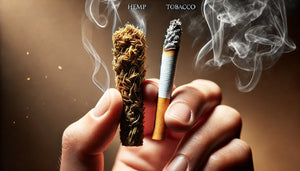
Do Hemp Cigarettes Burn the Same as Tobacco Cigarettes?
Do hemp cigarettes burn the same as tobacco cigarettes? While they burn similarly, hemp cigarettes tend to burn slightly faster due to lower moisture content and the absence of FSC paper. However, infused cannabinoids like CBD or Delta-8 can slow the burn rate. Learn what factors influence combustion and how hemp compares to traditional tobacco.
-
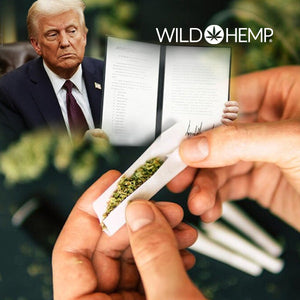
How Trump’s Tariffs Affect the Hemp, CBD & Cannabis Industry
Trump’s latest tariffs on Mexico (25%), Canada (25%), and China (20%) are set to shake up the cannabis industry—not by targeting cannabis itself, but by increasing costs on vape hardware, glass pipes, and rolling papers. With most vape batteries, dabbing electronics, and torches coming from China, glass pieces from China, India, and Nepal, and rolling papers produced globally, businesses and consumers alike will feel the pressure. While American-grown cannabis and hemp remain unaffected, the supporting supply chain faces major shifts. Read on to understand how these tariffs will reshape the industry and what alternatives may emerge.
-
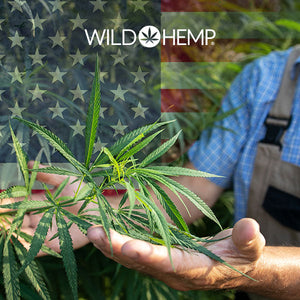
Is Hemp the Most American Plant on the Planet?
Hemp has been interwoven with American history for centuries, from its mandatory cultivation in colonial times to its resurgence after the 2018 Farm Bill. As a crop that fuels industries, shapes policies, and even influences pop culture, hemp stands as a uniquely American resource. But is it the most American plant on the planet? Explore its origins, political battles, and economic dominance in this deep dive.
-
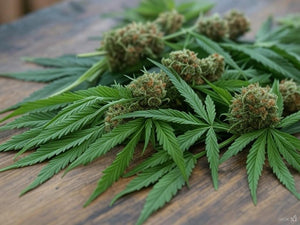
Is It Possible to Get High Off the Leaves of the Marijuana Plant?
Wondering if you can get high off cannabis leaves? Learn whether marijuana leaves contain enough THC to roll a blunt, smoke a leaf, or use in edibles & teas.
-
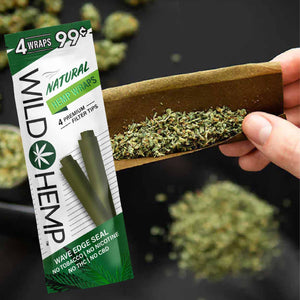
The Best Slow Burning Marijuana Hemp Leaf Wraps: Wild Hemp Wraps
When it comes to slow-burning marijuana hemp leaf wraps, Wild Hemp Wraps are the top choice. Designed for an extended, even burn, these wraps feature waved edges for easier rolling and a premium foil pack that keeps them fresh for up to 2 years. Made from 100% natural hemp, they provide a clean, smooth smoking experience without tobacco or additives. If you want a slow, flavorful smoke that enhances your cannabis experience, Wild Hemp Wraps are the perfect option.
-
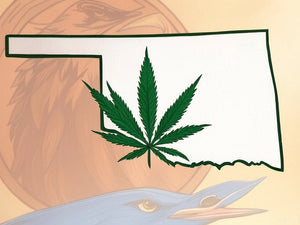
Best Hemp Wraps in Oklahoma!
Well, hey there, sugar! If you’re lookin’ for the finest hemp wraps in Oklahoma, Wild Hemp Wraps are fixin' to be your new best friend. These beauties come with a waved edge, making rolling as easy as pie—no more fussin’ or fightin’ with your wraps. And let me tell ya, the flavor? It’s downright delicious! You’ll be hooked the minute you try it.
-
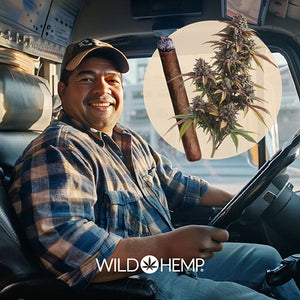
Can CDL Drivers Smoke CBD?
CDL truck drivers considering CBD? Learn about the legality, risks of THC in drug tests, and why vaping hemp-derived CBD is safer than smoking CBD flower. Stay compliant and stress-free on the road!
-
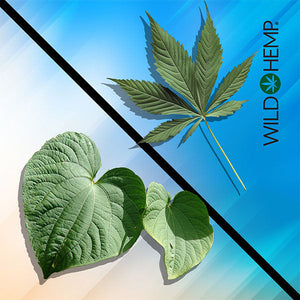
What is the Difference Between CBD and Kava?
In the world of natural wellness, CBD and kava are two popular plant-based substances often compared for their calming effects. While both are used for relaxation, they differ significantly in their chemical composition, effects, processing, consumption methods, and historical use. In this article, we break down the key differences between CBD and kava to help you make an informed choice.
-
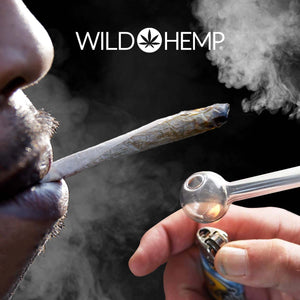
Smoking Hemp vs. Smoking Crack Cocaine (Similarities & Differences)
So, you’re wondering about the differences between smoking hemp and smoking crack? First of all, congratulations on having a fascinating train of thought. Secondly, I can assure you that while both involve inhaling burning plant matter (well, kinda), the similarities end there.
Let's break it down scientifically, legally, socially, and practically—while keeping it lighthearted, because let’s be honest: if you’re debating between rolling a CBD joint or hitting a crack pipe, you probably need some perspective.
-
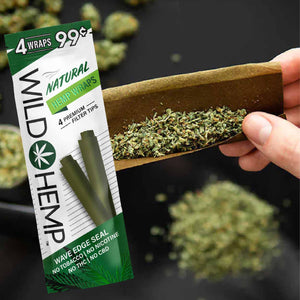
Do Hemp Wraps Get You More High? Exploring the Truth Behind the Buzz
Hemp wraps have surged in popularity as a natural alternative to traditional tobacco-based blunt wraps. As more cannabis enthusiasts explore new ways to elevate their smoking experience, a common question arises: Do hemp wraps get you more high? This article delves into the relationship between hemp wraps and your high, why they’re a preferred choice for many, and which hemp wrap stands out from the rest.
-
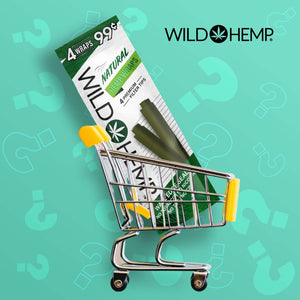
How Much Are Blunt Wraps? Tobacco vs. Hemp Wraps Price
Blunt wraps have long been a go-to for smokers looking to roll their own blunts, but prices have steadily increased over the years due to inflation and taxation. While many still associate blunt wraps and cigarillos with the classic 99 cents for two price point, the reality is that in most places, they now cost more.
-
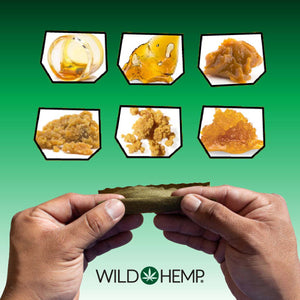
How to Wrap a Blunt with Concentrate: A Step-by-Step Guide to Rolling Like a Pro
Though most people like to enjoy their blunts and concentrates separately, the true connoisseur and heavy duty smoker dabbles on the frontier of weed smoking technology by combining the two. Blunt wraps and concentrates have become staples in these smoking communities, offering a powerful and flavorful experience when combined. Whether you're rolling with wax, dabs, hash, or shatter, combining these potent concentrates with your favorite blunt or hemp wraps takes your session to the next level. If you’re ready to learn how to roll a blunt with concentrate, keep reading for an easy-to-follow guide.
-
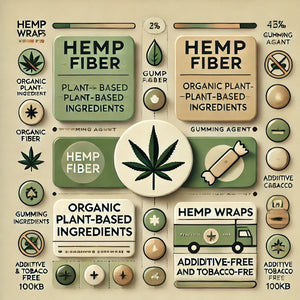
What Do Hemp Wraps Contain?
Curious about what ingredients are found in hemp wraps? Explore our comprehensive blog to uncover the composition of hemp wraps, including hemp fibers, organic plant-based ingredients, gumming agents, and flavorings. Discover why hemp wraps are gaining high popularity as a tobacco-free and sustainable alternative. -
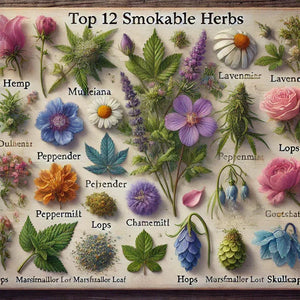
The Top 12 Most Popular Smokable Herbs
The Top 12 Most Popular Smokable Herbs Smokable herbs have gained popularity as alternatives to traditional tobacco products or as complementary in... -
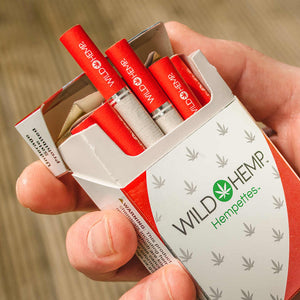
Smoking Mullein vs. Hemp Cigarettes: Key Differences and Insights
Smoking Mullein vs. Hemp Cigarettes: Key Differences and Insights In recent years, herbal cigarettes have gained popularity among those seeking alt... -
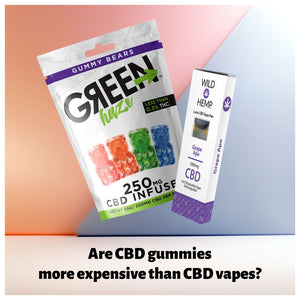
Are CBD Gummies More Expensive Than CBD Vapes?
With the rising popularity of CBD products, many people wonder which method of consumption is more cost-effective: CBD gummies or CBD vapes? Both... -
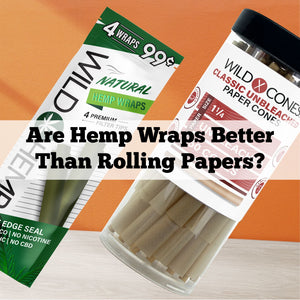
Are Hemp Wraps Better than Rolling Papers?
Are Hemp Wraps Better than Rolling Papers? In the world of cannabis enthusiasts, the debate between hemp wraps and rolling papers is a heated one. ... -
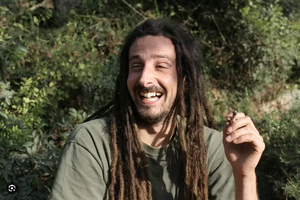
The Science of Laughter: Why Cannabis Makes You Giggle
Why Does Cannabis Make You Giggle? Hey there, curious mind! Ever wondered why a few puffs of cannabis can leave you giggling like a tickle monster ... -
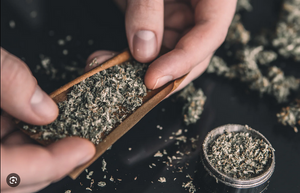
Hemp Wraps vs. Tobacco Wraps: A Comprehensive Comparison
Ever wondered why your blunt tastes different depending on the wrap you use? The answer lies in the material of your chosen wrap. Hemp Wraps: - Ma... -

Discreetly Relaxing: A Parent's Guide to Using CBD Undetected
Keeping Your CBD on the Down Low Full time jobs, carpooling everywhere, managing medication schedules. Being a parent means having a packed schedul... -

Is It Safe to Use CBD Before a Job Interview?
CBD Before Your Big Interview: Smart Move or Risky Business? 🤔 Got a job interview coming up? Feeling the jitters? You might be thinking about turn... -
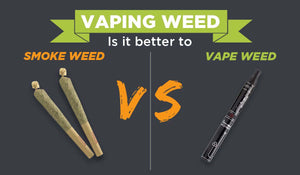
Is Vaping Weed Better Than Smoking It With A Blunt?
For any experienced cannabis enthusiast, the great vape vs. blunt debate has raged since the rise of vaporizers. Both methods have their die-hard fans that'll defend their side until they're blue in the face. But which one really takes the crown? The answer, like with most stoner debates, is...it depends.
Let's break it down
-
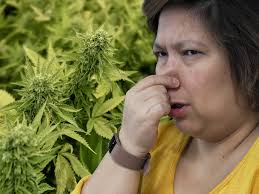
How To Hide Weed's Smell
Lighting up a joint sounds relaxing, until you're hit with paranoia about that dank smell giving you away. Whether you're trying to toke in private... -
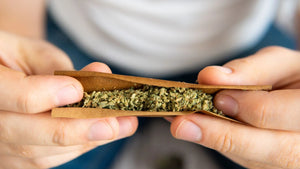
How to Roll the Perfect Blunt (For Beginners)
Rolling a blunt is a skill, but I'll show you how to do it. Cutting straight to the chase: 1. Grind your weed into an even mix.2. Get your Wild Hem... -
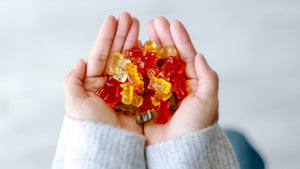
Can Kids or Teenagers Safely Eat CBD Gummies?
CBD gummies have become a popular way for adults to get CBD. But what about kids and teens - is it safe for them to eat CBD gummies too?
-
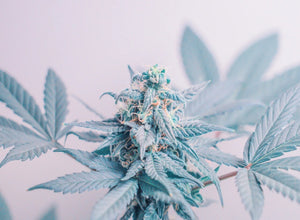
Should You Store Your Hemp Wraps in the Fridge or Freezer?
Lots of people are switching from tobacco wraps to hemp wraps. Hemp wraps are made from the hemp plant instead of tobacco. But hemp wraps still need to stay fresh so they smoke right. So should you keep hemp wraps in the fridge or freezer?
-
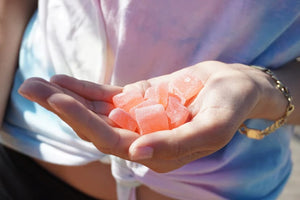
What is the Best CBD Gummy Dosage for Beginners?
CBD gummies are very popular. But what dose should you take if you've never had CBD before? Here are tips for new CBD users to find the right dose.
-
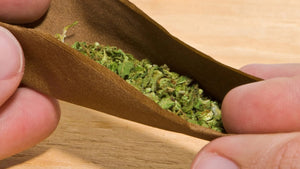
Are hemp rolling papers better for the environments?
Lots of people want to make choices that don’t hurt the environment. Some think hemp rolling papers are better than normal rolling papers. But is this true?
-
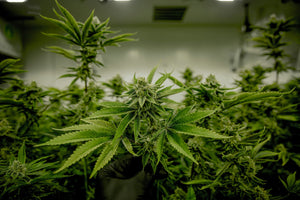
Maximize Your Vaping Experience With THC Free CBD Vapes
There are many reasons you might want to enjoy your CBD without any THC. Whether you’re trying to pass an upcoming drug test, looking to avoid the ... -
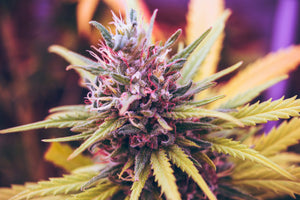
Understanding the Effects of Smoking CBD: How Does It Affect You?
The amazing benefits of CBD can be enjoyed in various ways — from gummies to tinctures to topicals and more. But while all those methods of consump... -
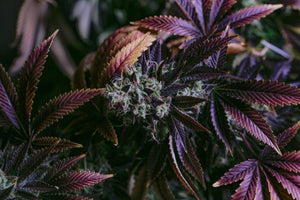
Exploring the Different High CBD Strains and Their Effects
While many people seek out certain cannabis strains primarily for their THC content, others prefer their flower to be CBD-centric with just a touch... -
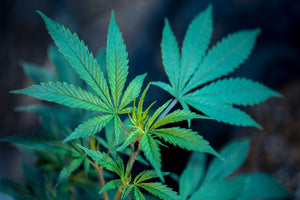
Understanding Lemon Cherry Gelato Strain: A Detailed Guide
If you’re looking for a dessert-flavored strain that’s tailormade to be enjoyed after dinner, Lemon Cherry Gelato may be the answer. This potent in... -
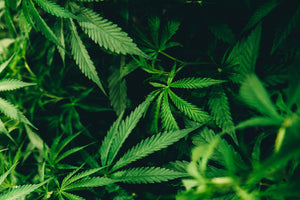
Strawberry Cough Strain: Everything You Need to Know
If you’re looking for a potent sativa-dominant hybrid strain with a terpene-packed flavor profile and an unimpeachable pedigree, Strawberry Cough m... -
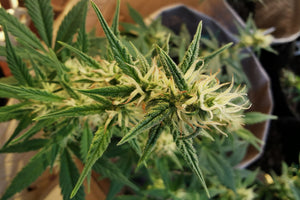
Know More About the Pineapple Express Strain: The Complete Guide
Best known as the centerpiece strain of the 2008 Seth Rogen stoner comedy of the same name, Pineapple Express is a potent sativa-dominant hybrid th... -
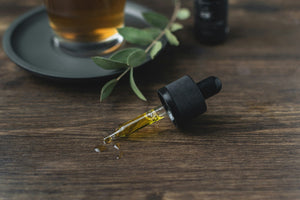
Can you Vape CBD Oil? What You Need to Know
Can You Vape CBD Oil? What You Need to Know Of all the ways to enjoy the potential health benefits of CBD, vaping is among the most popular. This... -
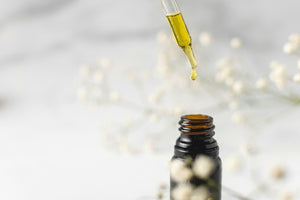
Exploring the Trend: Can You Smoke CBD Oil?
There are many ways to enjoy the amazing health benefits of CBD, and each offers something unique. But what would happen if you were to use cross-c... -
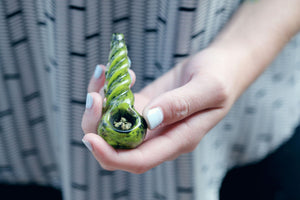
Can You Smoke CBD Oil From A Bowl? Exploring the Method
Can You Smoke CBD Oil From a Bowl? CBD oil is easily the most versatile form of CBD available. You can place a few drops under your tongue for fa... -
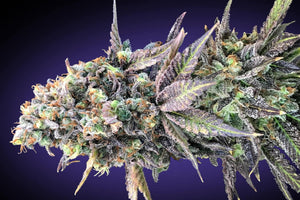
The Ultimate Purple Punch Strain Guide: Effects, Flavors, and More
Born from the crossing of two potent indica classics, the Purple Punch strain offers a deeply relaxing experience and a sweet and fruity flavor pro... -
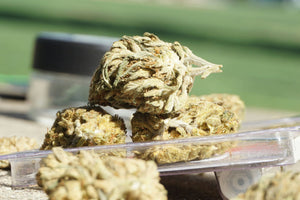
Can You Smoke CBD Flower?
Can You Smoke CBD Flower? There are many ways to consume CBD. It’s not unusual to start with edibles, like gummies, that offer discretion and the... -

What to Know Before Flying With a Vape Pen
Traveling by air can be a stressful experience, but traveling with CBD products can make things even more stressful. With laws varying from state t... -
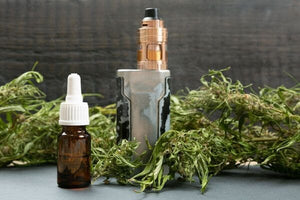
Uncovering the Shelf Life: How Long Does Opened CBD Vape Juice Last?
What Happens To Open CBD Vape Juice Over Time? You love that first lush watermelon CBD hit! But on vacation, the faded bottle doesn’t seem as yummy... -

Can You Bring a CBD Vape Pen on an Airplane? What the Rules Say
Can I Bring My CBD Vape Pen on A Plane? That big vacation ahead has you daydreaming already, huh? Picture yourself sunk in the sand, with soothing ... -
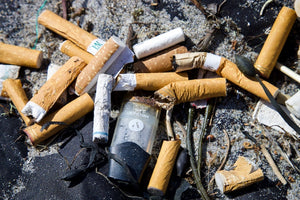
Do CBD Cigarettes Have an Expiration Date? What You Need to Know
Have you ever wondered if CBD cigarettes can go bad? Let's talk about it. CBD cigarettes are pretty new. But regular tobacco cigarettes can definit... -
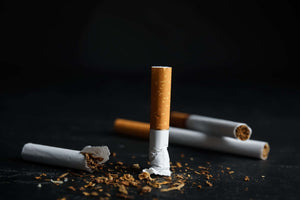
Do CBD Cigarettes Contain Nicotine? The Answer May Surprise You
Do CBD cigarettes contain nicotine? Everyone and their uncle swears these CBD smokes chill you out without all the nasty addiction hooks. But is i... -
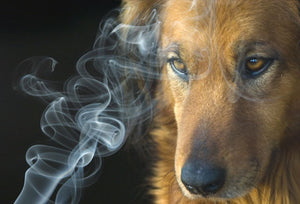
Is It Safe for Dogs to Inhale CBD Smoke?
Should You Let Your Dog Frolic in CBD Smoke? Go ahead, take a long slow puff of that CBD cigarette after a tough day. As the smoke blows out, you... -
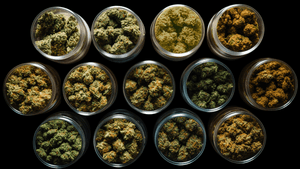
Top Strains for Hemp Wraps - Best Weed to Roll Blunts With
Finding the Best Buds for Hemp Wraps Rolling up with hemp wraps has gotten popular lately. And for good reason - these wraps taste smooth, burn ev... -

Will CBD Cigarettes Cause You to Fail a Drug Test? What You Need to Know
So you just landed your dream job. During the hiring process, they surprise you with having to take a drug test. No big deal, you think - except... -
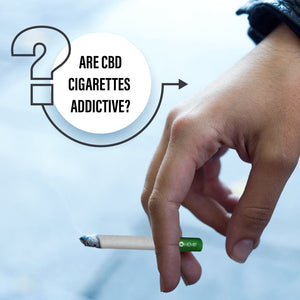
Are CBD Cigarettes Really Non-Addictive? What Science Says About Quitting Tobacco
Does your cig craving have you feeling chained? You know cigs are controlling your life, but can't make the chains break. Every burnt inhale taun... -
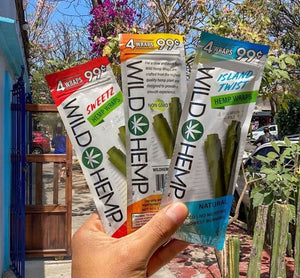
Understanding the Environmental Impact of Hemp Wraps: A Sustainable Choice
Understanding the Environmental Impact of Hemp Wraps: A Sustainable Choice In recent years, there has been a growing interest in sustainable and ... -
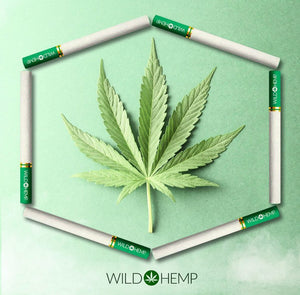
Exploring the Top 5 Types of CBD Smokes: A Comprehensive Guide
In recent years, CBD (cannabidiol) has gained immense popularity as a natural remedy for various ailments, and smoking CBD has become an increasingly popular method of consumption. CBD smokes offer a convenient and enjoyable way to experience the potential benefits of this non-psychoactive compound. With a wide range of options available in the market, it can be challenging to navigate the various types of CBD smokes. In this blog post, we'll explore the top five types of CBD smokes to help you make an informed choice and enhance your CBD experience.




















































